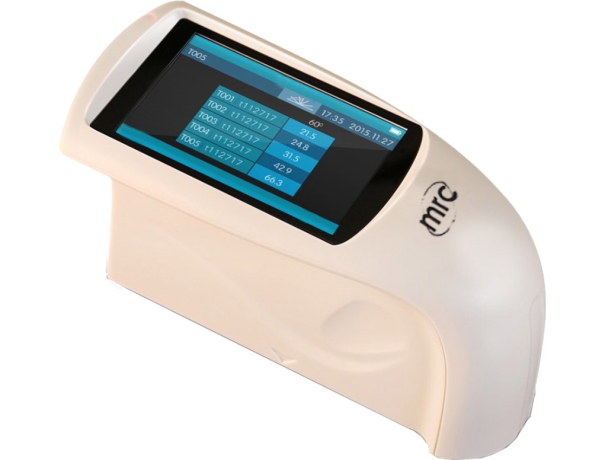A gloss meter measure the gloss of a surface.
Gloss is the attribute of surfaces that causes them to have shiny or lustrous appearances.
The gloss meter measures the specular reflection of light off the surface at a particular angle.
Gloss Units (GU): The measurement unit for gloss, where 100 GU is a perfectly reflective black glass and 0 GU is a perfectly absorbing black glass.
Gloss Variation: Gloss meters can detect differences in gloss levels across a surface, which is important for quality control.
How it Works:
Gloss meters work on the principle of specular reflection, where light is reflected off a surface at an equal and opposite angle to the angle of incidence.
Angle: Gloss is typically measured at three angles: 20° (low gloss), 60° (medium gloss), and 85° (high gloss), each suited for different types of surfaces.
Measurement: The meter emits a beam of light onto the surface at the specified angle and measures the amount of light reflected back.
The more light reflected, the higher the gloss.
Gloss meter is an instrument which is used to measure the specular reflection of a surface.
Gloss meters are devices designed to quantify the glossiness of a surface. Gloss, in this context, refers to the reflective quality of a surface, often associated with its shine or luster. These meters provide objective measurements, allowing manufacturers to assess and maintain surface quality standards consistently.
Applications of Gloss Meters
The versatility of gloss meters extends across various industries:
Quality Control: Industries use gloss meters to ensure consistency in the gloss of products, like automotive coatings, furniture, and printed materials.
Surface Finish: Gloss meters help assess the finish of surfaces, aiding in achieving desired gloss levels for aesthetic or functional purposes.
Material Selection: In material science, gloss measurement can indicate material properties like surface smoothness and reflectivity.
Research and Development: Gloss meters are used in R&D to develop new materials and coatings with specific gloss characteristics.
Forensics: In forensic science, gloss measurement can help analyze surfaces for evidence or identify counterfeit products.
Healthcare: In dentistry, gloss meters can assess the surface finish of dental restorations.
Automotive Industry
In automotive manufacturing, gloss meters ensure that paint finishes meet stringent quality standards, enhancing the visual appeal of vehicles and maintaining brand reputation.
Paint and Coatings Industry
They are indispensable tools for assessing the quality of paint and coatings, ensuring uniform gloss levels across surfaces.
Plastics Industry
They help monitor surface finish consistency, ensuring product quality and aesthetics.
Printing Industry
Used to evaluate the glossiness of paper and printed materials, ensuring desired surface characteristics.
Wood and Furniture Industry
Gloss meters aid in maintaining consistent surface finishes on wood and furniture products, enhancing their visual appeal and value.
